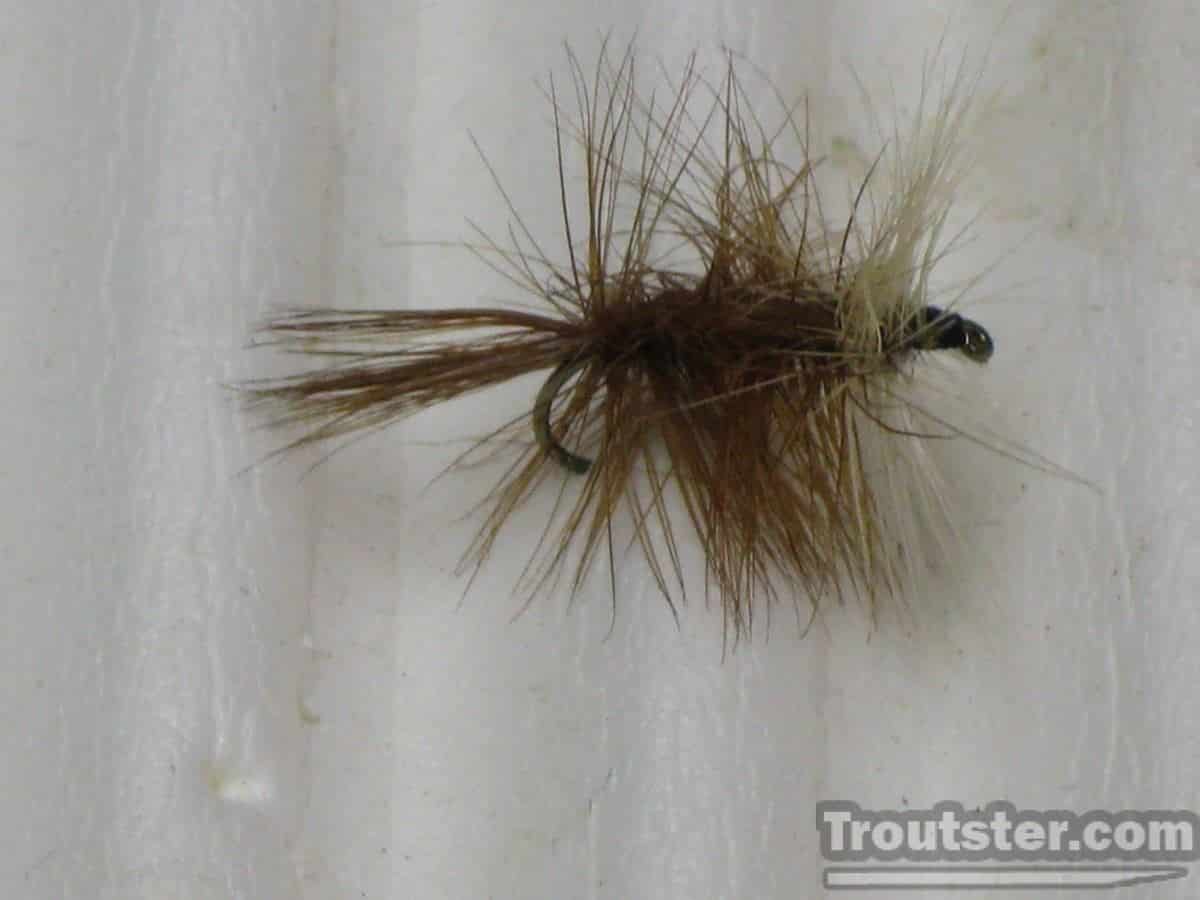This post was last updated on December 3rd, 2022 at 07:42 pm

The Bi-visible Fly Extremely Simple to Tie and Devastatingly Effective
When you peek into your fly box looking for the perfect “buggy” fly pattern, most people wouldn’t normally consider the bivisible an option. It doesn’t look like an insect at all, in fact it looks like a child tied it as their very first fly tying project– but this fly gets results! Now I wouldn’t advise using this fly during a caddis fly hatch and expecting results, however in sizes 14 and 16 these could easily pass for a caddis. During the hatch free hot summer days this fly can be a day saver. Frankly this fly looks more like a floating piece of debris in the river than it does an insect, but I only know one thing about it– fish eat it.
When Would I Use the Bivisible Pattern?
I normally tie this fly on in small creeks that are filled with brook trout, or even for cutthroat trout in the West. This fly is also perfect for use on rising Arctic grayling. I have not had a lot of success catching big browns in clear water with this fly, but in times where trout are watching for food and don’t have a chance to thoroughly inspect your fly, this will often get their attention; causing aggressive strikes. The times when the bivisible fly really shines, is when there is no discernible hatch taking place; opportunistic fish who are simply watching for something to eat that looks like food.
Tying the Bivisible
The materials involved in creating this fly are things that almost every single fly tier already has:
- Black thread
- Brown hackle
- White hackle
- Dry fly hook of choice
I like to tie these in hook sizes 8-14 just to ensure I have a good variety. The smaller the fly, it seems the better it works in clear water fishing conditions or in the presence of picky trout.
Palmering Hackle
The art of palmering hackle is used in almost every dry fly pattern (aside from Chernobyl ants and hoppers etc.) It simply involves wrapping the hackle around the hook over and over, a process that you are most likely already familiar with.
The steps to tie this fly include:
- Tie on several strands of brown hackle for the tail.
- Add a long piece of hackle to the back of the hook and wrap forward about 2/3 up the hook and tie it in.
- Finish the front of the fly with your white hackle and whip finish.
- Apply head cement if you want.
This fly is a great one to teach your kids to tie. The simplicity will be easy enough for kids to really enjoy, and best of all they will be able to catch fish easily with their fly tying creation. Take it out to the bluegill pond and watch this fly get eaten until it falls apart. The bivisible is an often overlooked fly pattern that deserves a place in everyone’s trout fly box.


